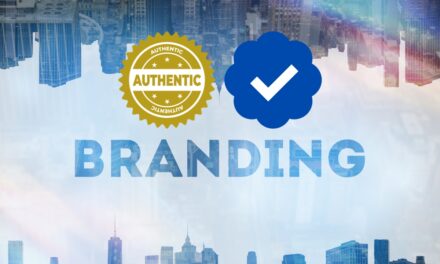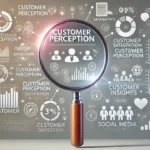Introduction
A business is successful when it isn’t about you; instead, it is about what you are doing for your business. No task is more important than the time you spend creating new products and designing marketing strategies. You’re a success when you don’t have to run the business; you’re a success when you can spend your time doing what you love.
In the last post, I explained some elements and how they depend on each other to run a successful online business. If you haven’t read it, you can find it here: https://prashantchaudhari.com/2022/01/how-to-use-internet-technologies-for-your-success-part-1/
Let’s look at the few more elements in this post that help you automate your business.
Prospect Journeys
A prospect journey is a series of steps; each step builds upon the last, helping the prospect get closer to buying your product or service. It is a complete marketing plan designed to help you find new customers, increase your customer base, and increase the frequency with which your prospects buy from you.
There are many different types of prospect journeys. The journey starts when a prospect first hears about your business. From there, prospects move forward and forward through various stages until they finally buy from you.
While each of those stages has a specific goal and is clearly defined, the order you go through them can be confusing. You need to consider the ‘temperature’ of your audience – if they are cold, warm, or hot. You also need to consider the ‘sophistication’ of your market – if you are the first in the market, or there is already a lot of competition, and your audience has already heard all the possible claims about the benefits of your product. And you must take into consideration – the awareness level of your target audience. Eugene Schwartz has defined five levels of awareness; those are:
- Most Aware: These are your best customers – your multi-buyers.
- Product Aware: These prospects know your product but haven’t bought it. They’re familiar with your competitors’ offerings. They’re just not sure if your solution is best for them.
- Solution Aware: Solution-aware prospects know about solutions like yours but don’t know your specific product or service.
- Problem Aware: Problem-aware prospects know they have a problem and have some idea of what that problem is, but they may not completely understand it.
- Unaware: These are prospects who don’t realize they have a problem. They simply don’t know a better way exists.
Essentially, you want to meet them where they are. Depending on the level of awareness of your audience, you need to choose if you’re going to educate them about their problem, or about possible solutions, or about distinguishing factors of your product, or directly give them an offer!
Once you decide your strategy, you need to advance them from where you meet them till they buy from you. Prospect Journey is a new way of building relationships.
A journey is a series of steps and experiences designed to guide you on your path to meeting the right person and moving forward in your business life together.
Value Delivery Vehicles
Your product or service exists to solve the problem of your audience. There are multiple ways in which you can deliver solutions to your audience. For example, you can provide the solution in a book, ebook, audiobook, video course, live-online workshop, live group coaching, one-on-one coaching. Etc.
The goal of each vehicle is the same – to provide a solution to your client’s problem. The only difference is how much hand-holding you do while delivering the value. There is a separate cost involved with each vehicle. The more your involvement in the value delivery, the more it will be pricier to your client.
Offers
For each value delivery vehicle, you need to create an offer. Without an irresistible offer, you can’t sell your products/services. An offer is not just a price attached to your product/service. A well-designed offer helps your prospect make decisions.
The offer is one of the most critical elements in the marketing mix. It’s the offer that encourages customers to buy your product or service. The offer also makes them feel like they are getting a good deal.
A good offer includes:
- Attractive and relevant bonuses – we love bargains. It feels good to know that you have got a good deal!
- An element of urgency – people are lazy; they procrastinate. Unless there’s an element of urgency, people won’t take immediate action.
- Scarcity – Nothing drives people like fear of missing out.
- Guarantee – people are afraid of loss and don’t want to look stupid. You can do risk reversal by providing guarantees – conditional or unconditional. You can be very creative with guarantees!
Funnels with Order bumps, Upsells, And Downsells
Now that you have an irresistible offer, you need to present it to your audience in an equally brilliant way. You create a systematic flow of actions that provide your audience with a good buying experience.
Your marketing efforts are directed towards bringing your audience to your sales funnel. Technically speaking, a funnel is a set of web pages presented to the user in a specific sequence that depends on their actions and your marketing strategy.
When you drive traffic to your funnel (using an ad, social media post, blog post, or an affiliate link), the prospect comes to your page intending to buy the advertised product/service. Usually, it’s a low-cost thing, often called a front-end product.
When the prospect reaches the payment screen, he is shown the order bump. The order bump is an accessory that enhances the benefit of the front-end product. When the prospect makes the payment, they are presented with another offer before completing their order. It’s called ‘upsell.’ Since they are in a ‘mood’ of buying, they are highly likely to buy it. And to make the process swift, they don’t need to enter the credit card details again; they just need to click the “Yes, I will take it” button (or “No, I will pass this offer” if they don’t want it). If they don’t buy it, you show them another low-priced offer.
In short, they come to buy a specific product. Since they have already qualified themselves as buyers, you can cash on their commitment by offering them related products/services that add more value to the front-end product.
Before designing your funnel, you must carefully choose the front-end product, order bump, upsell, and downsell. All of them must be related and should add value towards solving a specific problem of your audience. A well-designed funnel helps you increase your sales per customer and thus allows you to spend more money on acquiring a customer. (You can spend more money on your marketing than your competitor.)
There are specialized software for creating funnels. Some even allow you to add as many upsells as you want.
Conclusion
In conclusion, we saw that we must carefully plan the prospect journey before we build an offer or a funnel. We need to create specific products/services using appropriate value delivery vehicles.
We learned about the elements of an offer and how to design a funnel. We also learned that an offer is not just a price attached to your product/service.
A good offer includes attractive and relevant bonuses, an element of urgency, scarcity, and a guarantee.
A well-designed funnel with order bump, upsells, and downsells helps you increase your sales value per customer and thus allows you to spend more money on acquiring a customer.
The third part of this post is available at: https://prashantchaudhari.com/2022/01/how-to-use-internet-technologies-for-your-success-part-3/











